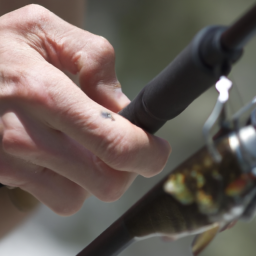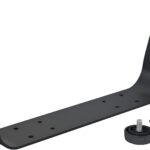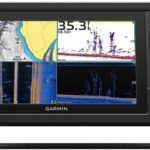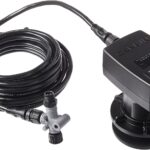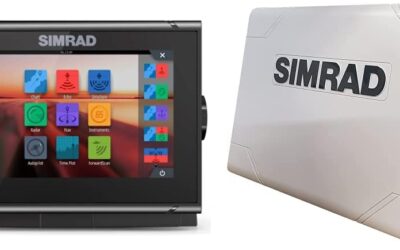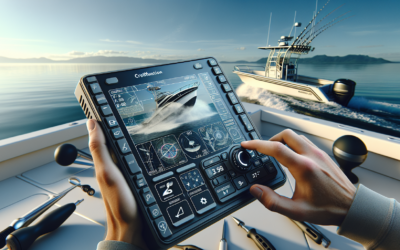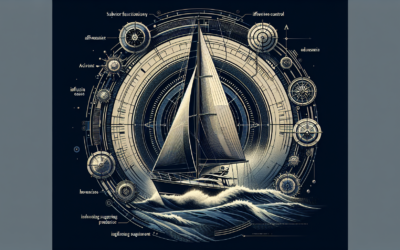Are you an avid angler searching for the perfect fish finder? Look no further! “The Ultimate Fish Finder Purchase Checklist: Finalizing Your Choice and Making the Buy” is here to help you make an informed decision and ensure you don’t miss out on any key features. This comprehensive checklist covers everything from display options to GPS capabilities, ensuring that you find the perfect fish finder to enhance your fishing experience. Say goodbye to guesswork and hello to successful fishing trips with our ultimate fish finder purchase checklist!
1. Determine Your Needs
When it comes to purchasing a fish finder, the first step is to determine your needs. Ask yourself whether you will be primarily fishing in freshwater or saltwater. This is important because certain fish finders are specifically designed for one environment or the other. Consider the type of fishing you will be doing, whether it’s in rivers, lakes, or the open ocean.
Next, think about the depth and range at which you will be fishing. Different fish finders have different capabilities when it comes to detecting fish at various depths. If you plan on fishing in shallow waters, a fish finder with a lower depth range may be sufficient. However, if you anticipate fishing in deeper waters, you will need a fish finder with a higher depth range.
Lastly, consider the display features that are important to you. Some fish finders offer color displays, while others have black and white screens. Think about whether you prefer a larger screen size for easier viewing, and whether resolution and clarity are important factors for you. Understanding your needs will help you make a more informed decision when it comes to choosing the right fish finder for you.
2. Consider Your Budget
Once you have determined your needs, it’s important to consider your budget. Fish finders can vary greatly in price, so it’s crucial to set a budget and stick to it. Consider the price range that you are comfortable with and start looking for fish finders within that range.
Additionally, it’s important to account for any additional costs that may come with owning a fish finder. This can include the cost of accessories such as mounting brackets, transducers, or GPS modules. It’s always a good idea to factor in these additional costs when establishing your budget to avoid any surprises when it comes time to make your purchase.
3. Research Different Types of Fish Finders
When it comes to fish finders, there are two main types to consider: stand-alone fish finders and combo units. Stand-alone fish finders are dedicated devices solely for detecting fish and displaying sonar readings. On the other hand, combo units are multifunctional devices that not only provide fish-finding capabilities but also include GPS navigation and chartplotting features.
Consider the advantages and disadvantages of each type of fish finder. Stand-alone fish finders are often more affordable and easier to use, especially for beginners. On the other hand, combo units offer the convenience of having multiple features in one device, but they can also be more expensive and have a steeper learning curve.
Take the time to research and compare different fish finders to determine which type best suits your needs and budget.
4. Assess Transducer Capabilities
The transducer is a critical component of a fish finder as it sends out sound waves and receives the echoes to create a visual representation of the underwater environment. When evaluating different fish finders, it’s important to assess the transducer capabilities.
Consider the transducer frequency. Fish finders with higher frequencies provide greater detail and resolution, making it easier to distinguish between different objects in the water. However, higher frequencies may have a shorter range and may not penetrate as deeply in the water. Conversely, lower frequencies have a longer range and can penetrate deeper, but the level of detail may not be as precise.
Another important factor to consider is the transducer cone angle. The cone angle determines the coverage area of the sonar beam. A wider cone angle covers a larger area but may sacrifice detail, while a narrower cone angle provides more precise information but covers a smaller area. Think about the type of fishing you will be doing and the level of detail you require in order to choose the right transducer capabilities for your needs.
5. Evaluate Display Quality
The display quality of a fish finder is crucial, as it allows you to interpret the information provided by the sonar readings. When evaluating different fish finders, pay attention to the screen size. A larger screen size can make it easier to read and interpret the information displayed, especially in bright sunlight or rough water conditions.
Resolution and clarity are also important factors to consider. A higher resolution display will provide more detailed and sharper images, making it easier to identify fish and underwater structures. Clarity is crucial, as a clear display ensures that the sonar readings are accurately represented. Take the time to compare different displays and consider what will best suit your needs and preferences.
Lastly, think about whether you prefer a color display or a black and white display. Color displays offer more vibrant and detailed visual representations, while black and white displays can be easier to read in certain lighting conditions. Consider your personal preferences and the conditions in which you will be fishing to choose the display quality that is right for you.
6. Consider GPS and Mapping Features
Integrated GPS and mapping features can greatly enhance your fishing experience. Fish finders with integrated GPS allow you to mark and save fishing hotspots, track your location, and navigate to specific waypoints. This can be especially useful when fishing in unfamiliar waters or when trying to locate specific underwater structures.
Consider the accuracy and reliability of the GPS system, as well as the ease of use when it comes to marking and navigating to waypoints. Additionally, some fish finders offer advanced mapping software that provides detailed underwater topography and contours. This can give you a better understanding of the underwater landscape and help you identify potential fishing spots.
Take the time to evaluate the GPS and mapping features offered by different fish finders to determine which ones align with your fishing needs and preferences.
7. Check for Ease of Use
When selecting a fish finder, it’s important to consider its ease of use. A user-friendly fish finder will greatly enhance your fishing experience and allow you to focus on what you enjoy most – catching fish!
Evaluate the user interface of the fish finder. Is it intuitive and easy to navigate? Consider the controls and buttons. Do they feel comfortable and easy to operate? Take into account the menu navigation. Is it straightforward and logical? The last thing you want is to spend more time figuring out how to operate your fish finder than actually fishing.
Consider your level of experience with fish finders and choose a model that matches your skill level. Some fish finders have advanced features that may be more suitable for experienced anglers, while others offer simpler functionality that is perfect for beginners.
8. Look for Additional Features
While the core functions of a fish finder are to detect fish and display sonar readings, many models offer additional features that can greatly enhance your fishing experience.
One such feature is CHIRP (Compressed High-Intensity Radiated Pulse) sonar technology. CHIRP sonar provides clearer, more detailed images by transmitting a range of frequencies rather than a single frequency. This allows for better target separation and improved identification of fish and underwater structures.
Another feature to consider is side imaging or down imaging. These technologies use specialized transducers to provide detailed, high-resolution images of what’s happening beneath your boat. Side imaging provides a view of the underwater landscape to the left and right of your boat, while down imaging provides a view directly beneath your boat. These features can be especially useful when trying to locate underwater structures or fish-holding areas.
Consider whether these additional features are important to you and whether they align with your fishing needs and preferences.
9. Read Product Reviews and Customer Feedback
One of the best ways to gather information about different fish finders is by reading product reviews and customer feedback. Professional reviews often provide in-depth analyses of various models, highlighting their strengths and weaknesses.
Pay attention to the features that reviewers mention and consider how they align with your needs and preferences. Keep in mind that what may be a disadvantage for one angler may not necessarily be a disadvantage for you.
Additionally, customer reviews and ratings can provide valuable insights into real-world experiences with different fish finders. Take note of any recurring themes or issues mentioned by customers as these can indicate potential drawbacks or advantages of a particular model.
By researching and considering both professional reviews and customer feedback, you can gain a more comprehensive understanding of the performance and reliability of different fish finders.
11. Make a Final Decision and Purchase
After thoroughly researching and evaluating the various factors involved in choosing a fish finder, it’s time to make a final decision and complete your purchase. Review all the information you have gathered about different fish finders and compare them to your needs, preferences, and budget.
When finalizing your choice, take into account all the previous steps. Consider the type of fishing you will be doing, the depth and range you need, the display features that are important to you, the transducer capabilities, the display quality, the GPS and mapping features, the ease of use, and any additional features that are of interest.
Once you have made your decision, it’s important to choose a reputable retailer to make your purchase. Look for a retailer that is known for their quality customer service and has a good reputation in the fishing community. Read reviews about their customer service, return policy, and warranty offers.
By following this comprehensive checklist, you can confidently finalize your choice and make an informed purchase that will enhance your fishing experience for years to come. Happy fishing!

